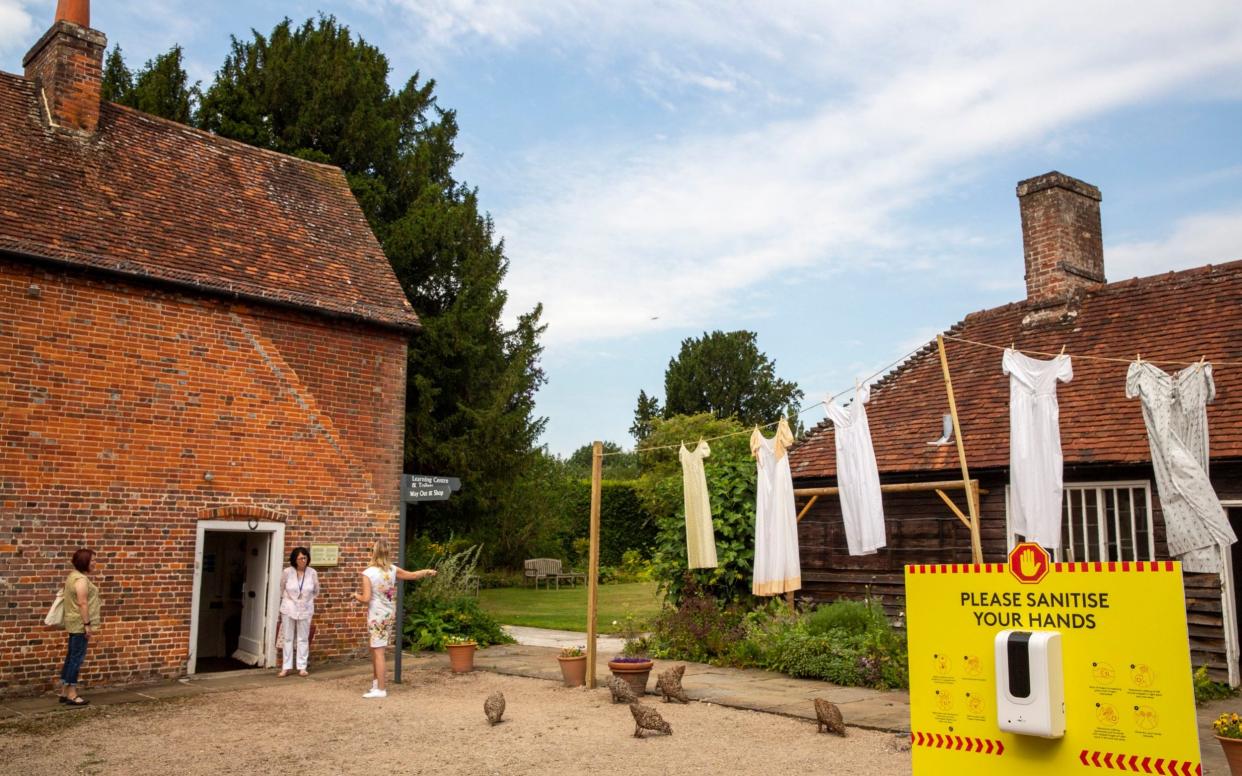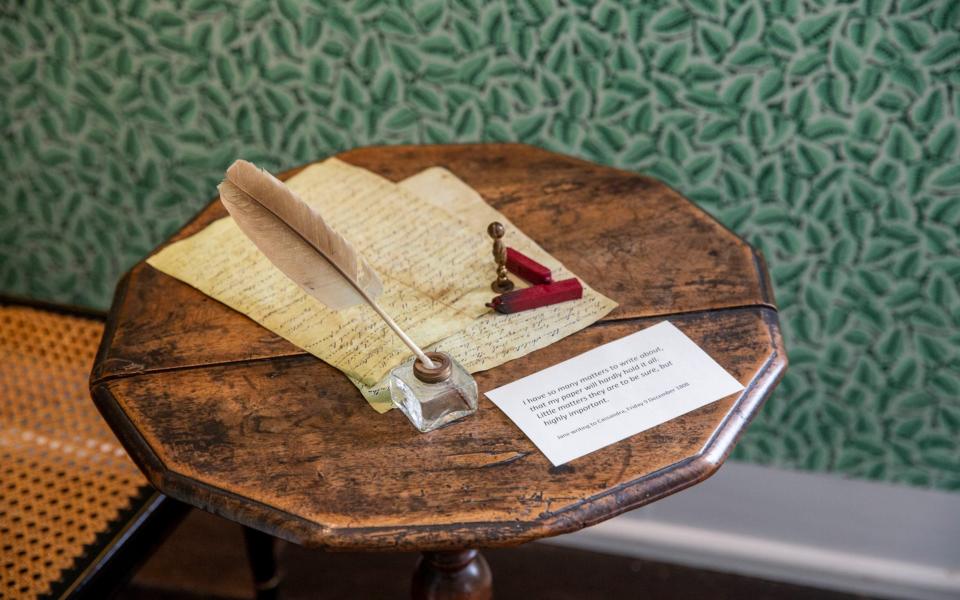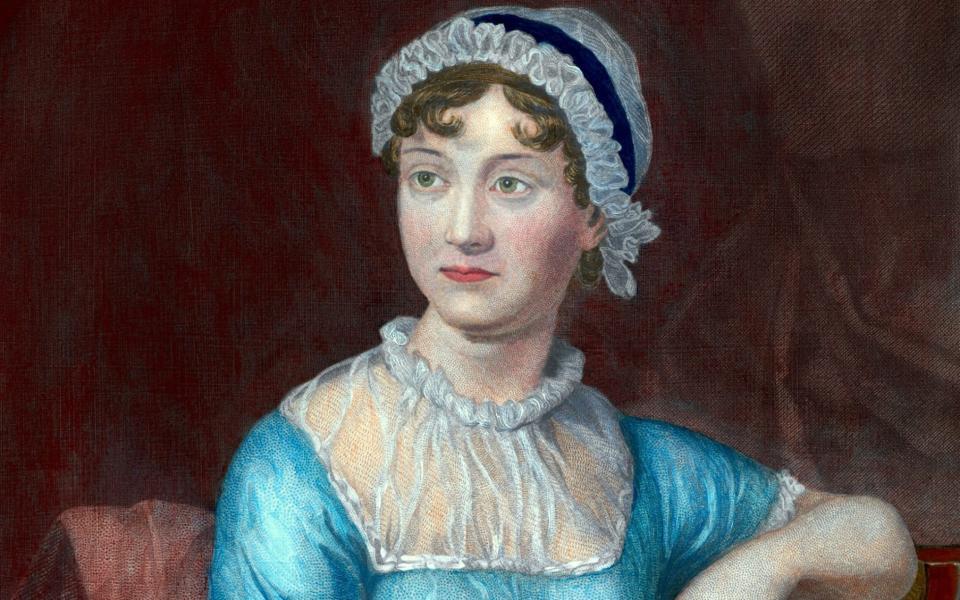Sense and sanitisation at the home of Jane Austen

Jane Austen’s House is airing its dirty laundry in public. As I arrive at the museum for its first day open in more than four months, I’m greeted in the courtyard by the sight of several period frocks dancing gently on a washing line. Wicker chickens graze placidly underneath.
The washing line is a new addition, and it stands as a symbol of the quick thinking that’s been going on in museums and visitor attractions up and down the country since lockdown began.
“The new one-way system, and using hand sanitiser, can be disconcerting for visitors,” the museum’s director, Lizzie Dunford, tells me. “We really wanted to make the house feel like a home where people are still living, so that visitors can feel welcome, feel safe.”
Jane Austen’s House is a success story, with over a million visitors since it opened as a museum in 1949 - not at all bad for somewhere off the beaten track, nestled among the thatched cottages of the placid village of Chawton in Hampshire.
It’s a hugely attractive building in weather-beaten but still vibrant red brick, but the real appeal for visitors is that Jane Austen lived here during her most productive years - the eight years leading up to her death in 1817, during which she published four of her novels: Sense and Sensibility, Pride and Prejudice, Mansfield Park, and Emma.

But like so many businesses that were perfectly successful pre- lockdown, Jane Austen’s House has been brought to the brink of closure in the last few months.
“Things were looking very bleak indeed,” says Dunford. “We are an independent charity and our day-to-day operations are 100 per cent funded by our visitor income.” Social-distancing measures mean the maximum number of daily visitors has to be drastically reduced: “we were looking at 25% of the income we needed to break even for the rest of the year.”
In June the museum launched a “survival appeal”, and within 36 hours it reached its target of £75,000 - three months’ running costs. The appeal remains open, standing at £96,010 as I write.
There were donors from Romania, Mexico, Beijing. Many had already been to the house; for others, it’s high on their bucket list. “It’s a real site of pilgrimage,” says Dunford.
Among those the house has worked its magic on are the playwright Laura Wade (Posh, Home, I’m Darling) and her partner, the actor and director Samuel West, who were appointed ambassadors for the museum at the beginning of the year.
“I first went there when we were in Chichester with The Watsons [a stage adaptation of an unfinished Austen novel] and we took all the cast there on a school trip basically,” says Wade.
“There was just something very magical about seeing the corner that she wrote in and the tiny table that she sat at - I don’t know how she managed it, my desk is four times the size and still I haven’t got room.” There’s something about Austen’s writing that compels people to want to get close to her: “you feel when you read the books that she’d be a great friend, really fun to hang out with, but you also feel there’s something unknowable about her.”
West, who directed Wade’s play (which was due for a West End run until Covid intervened), loves the intimacy of the place. “You get a sense of the smallness of the rooms and the bareness of them,” he says. “In her letters she talks about going to ‘the sofa’ when she’s ill - there’s only one sofa in the room. It’s a real antidote to that rich, over-decorated, posh veneer that a lot of period dramas, particularly Jane Austen adaptations, have.”
The house may be small but there is a great deal to look at. As well as her writing table, there are gold rings and topaz crosses that belonged to her, and in the grounds the remains of her old donkey carriage.
I found seeing a quilt that she made unexpectedly moving; I have sat at a few great writers’ desks in other museums, but seeing those has never had the same humanising effect as this example of something Austen worked on so diligently that has nothing to do with writing.

Inevitably the re-opening of the museum has brought in the superfans. Debra Roush, a vice-president of the Jane Austen Society of North America, loves it here: “We have a tendency to glamorise the old days, especially in the US, but here you can see what an ordinary house was like for people who weren’t unusually wealthy. It puts Jane in context: a living, breathing woman who cared for her house, her family and her garden, as well as a genius.”
Jane Walton, a milliner from Berkshire who has come in a self-made late-Regency liberty cotton dress, complete with bonnet and parasol, agrees. “This feels like it was for living in, not just socialising.”
Not everybody here is an Austen fanatic. One couple, who simply give their names as Hannah and Jason, are in their thirties and live 90 minutes away: she likes the books and he’s a “tag-along husband”, but they’ve both enjoyed themselves - “the house is really cute, nicely laid out and feels safely set up”.
There are fewer interactive activities at the House now - you can’t try on period clothes or make lavender bags any more - but as Lizzie Dunford says, “we’ve put in more than we’ve taken out.” Thanks to financial help from the emergency funds of the National Lottery Heritage Fund and the Art Fund, some of the splendid dresses that Anne Hathaway wore in the 2007 biopic Becoming Jane are newly on display, and for the first time there is audio content - music in the drawing-room, recipes read out in the kitchen.
There isn’t quite the usual bustle here, as only 70 visitors can be fitted in in one day, whereas 200 would be the norm for a sunny Saturday. The House is not out of the woods yet: “realistically it will be a couple of years before we’re back to pre-Covid numbers,” says Dunford. “We have to think about how to diversify our income streams and develop more online content.”
But the place is abuzz with optimism, and Dunford is full of praise for the staff who have got their hands dirty clearing out the cobwebs that accrued while the house was locked and shuttered.
Everybody who works here loves the place. “I think you feel Jane could have just stepped out and will be back any minute,” says museum shop supervisor Liz Bridges, who has worked here for 13 years.
Is Bridges optimistic about the future? “We will survive. We will all put in every effort to keep it open for the public. We can’t let it be lost on our watch.”
For more information go to janeaustens.house
